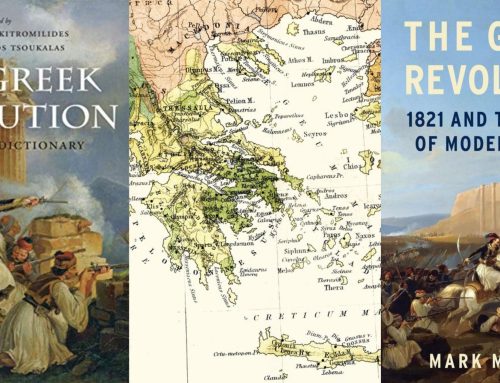Akala. Natives. Race and Class in the Ruins of Empire. London: Two Roads, 2018.
During this winter break, I finished reading Natives. Race and Class in the Ruins of Empire written by the British all-rounder Akala (Kingslee James McLean Daley). The book is a great read for educators, although it concludes with some worrisome prophecies for 2020.
Written from a first person narrative, the author tells his coming-of-age story as a mixed race boy in the city of London, hereby showing how his upbringing was influenced by the way Great Britain remembers their colonial past. This review will first introduce Akala, secondly discuss the general structure of the book, thereafter it will pose some questions about the future. Finally, a concluding remark will be made.
Introducing Akala
Akala is a well-known figure in the UK, as rapper, social entrepreneur and public speaker. He is an outspoken critic on (the growing) inequality in the UK, focusing on the oppressive features of class and race. This concern stems from his own experience as a mixed-race boy growing up in poverty in London in the 1990s. Akala’s mother has a Scottish heritage and his father a Jamaican background, however the father left the family before Akala was born. Akala therefore was educated by the wider black community which taught him about his black heritage, for example by attending a . However, the knowledge and confidence that Akala gained by attending a pan-African school would become something that got him in trouble at the public school.
Teachers’ Biases
Chapter three, four, and five discusses the discrepancies between education at the pan-African school and at the regular public school, which created a grotesque dislike for school. Akala describes different scenes in primary school as well as secondary school in which show a clash between white female teachers and his own perception of the curriculum and academic behaviour. An example is the moment that Akala was placed in a separate group, intended for students who needed some extra guidance. When his mother heard of this incident, she immediately requested a meeting with the teacher as there was no reason for him to be placed in such a group other than the colour of his skin. Akala combines his personal experience with academic studies. Namely, a study conducted by Bristol University showed that when teachers knew a student was black, they assessed them almost twice as low compared to work that was graded blind. This is a good example of how the book is structured; personal accounts from Akala supported with data from research. Thus, Akala is showing that his experiences are not incidental, but are structural and systematic as the cited research is showing.
The danger of a master narrative
The influence of a one-sided master narrative is explored in chapter five, which Akala explains by focusing on William Wilberforce. Great-Britain was one of the main slave trading nations and colonized many regions in the world with detrimental consequences. However, the narrative that the UK likes to propagate is that they were the first to abolish the slave trade and subsequently slavery. Akala eloquently debunks this narrative by indicating the importance of the slave revolts in the Caribbean. In a lecture given at Oxford Union, Akala challenged the master narrative by showing how history is a distortion of the past dependent on power. The lecture concluded by a plea of Akala for a more revolutionary inclusive people-centred global teaching of history. This would allow for children like Akala to feel a part of the curriculum, rather than an after-thought.
Europe and Race
In the subsequent chapters, Akala dives deeper into the consequences of an uncritical retelling of the European colonial past. This starts by explaining the difference between ethnicity and race, while highlighting the European origins of the concepts. The acclaimed-author Ta-Nahisi Coates described some years earlier how race was and still is a mechanism to hierarchically divide people:
“But race is the child of racism, not the father. And the process of naming “the people” has never been a matter of genealogy and physiognomy so much as one of hierarchy.”
Akala shows in chapter seven that racial hierarchy was clearly noticeable for him while growing up as a black boy in a struggling neighbourhood. Akala describes the first time he was stopped and searched by the police, while he was walking from the youth club at his school to his home around 7 pm. The significance of this event is indicated: “What racialized stop and search is about, in London at least, is letting young black boys and men know their place in British society, letting them know who holds the power and showing that their day can be held up […] in a way that will never happen to their white friends”.
More about racialized and classist distortions of (British) history writing is discussed in chapter eight and nine. I would like to highlight here especially the fascinating comparing and contrasting between the way that Western nations wrote their historical narratives about two freedom fighters: Nelson Mandela and Fidel Castro. After his release from prison, Nelson Mandela was depicted as saint by Western media and within that narrative the violent struggle to achieve racial equality in South Africa was dismissed. Fidel Castro was the only non-African leader to send support to Angola and Namibia against the invading racist regime from South-Africa. While Mandela named Castro a hero, he is depicted as a villain in the West. With the comparison, Akala wants to show how race and class influence the way history is written and that erasure of class was perceived more of a threat than racial equality.
And now?
Akala poses some questions to examine the role of history in the creation of a more equal society. He asks: is it possible to critically and honestly reflect on Britain’s history in an attempt to build a more ethical future? And this is a relevant question for more European countries. Akala attempts to answer this question in the last chapter, by explaining current-day events, like the Brexit havoc, as a reaction to the threat of continued reduction in white privilege. According to Akala the situation will not show any improvement if the white ruling classes are able to continue to “demonising the undeserving ethnic or other with whom poor white have more materially in common.”
Final Thoughts
The book can be perceived as a personal narrative woven into a historical account of the British Empire along the lines of race and class. Akala provides the reader with a long list of references, but no footnotes are included which would make it easier for the curious reader to consult sources. Besides, the structure of the book is not per se chronological and therefore difficult to divide in particular themes. Overall, Akala’s book is especially for (history) educators insightful, as it shows how an uncritical curriculum is glorifying some groups in society while neglecting or irritating others. The main message of the book, how race and class are constructed categories benefitting the ruling elite, is something that needs attention in not only Great Britain but in other European countries as well.
To conclude, a great read for the May break.
Maayke de Vries
History teacher at International School Almere
PhD Student University College London
Suggested Readings:
Coates, Ta-Nehisi. Between the World and Me. First edition. New York: Spiegel & Grau, 2015.
Hirsch, Afua. Brit(ish): On Race, Identity and Belonging. London: Penguin Random House, 2018.
Mishra, Pankaj. From the Ruins of Empire. The Revolt Against the West and the Remaking of Asia. London: Penguin Books, 2012.













